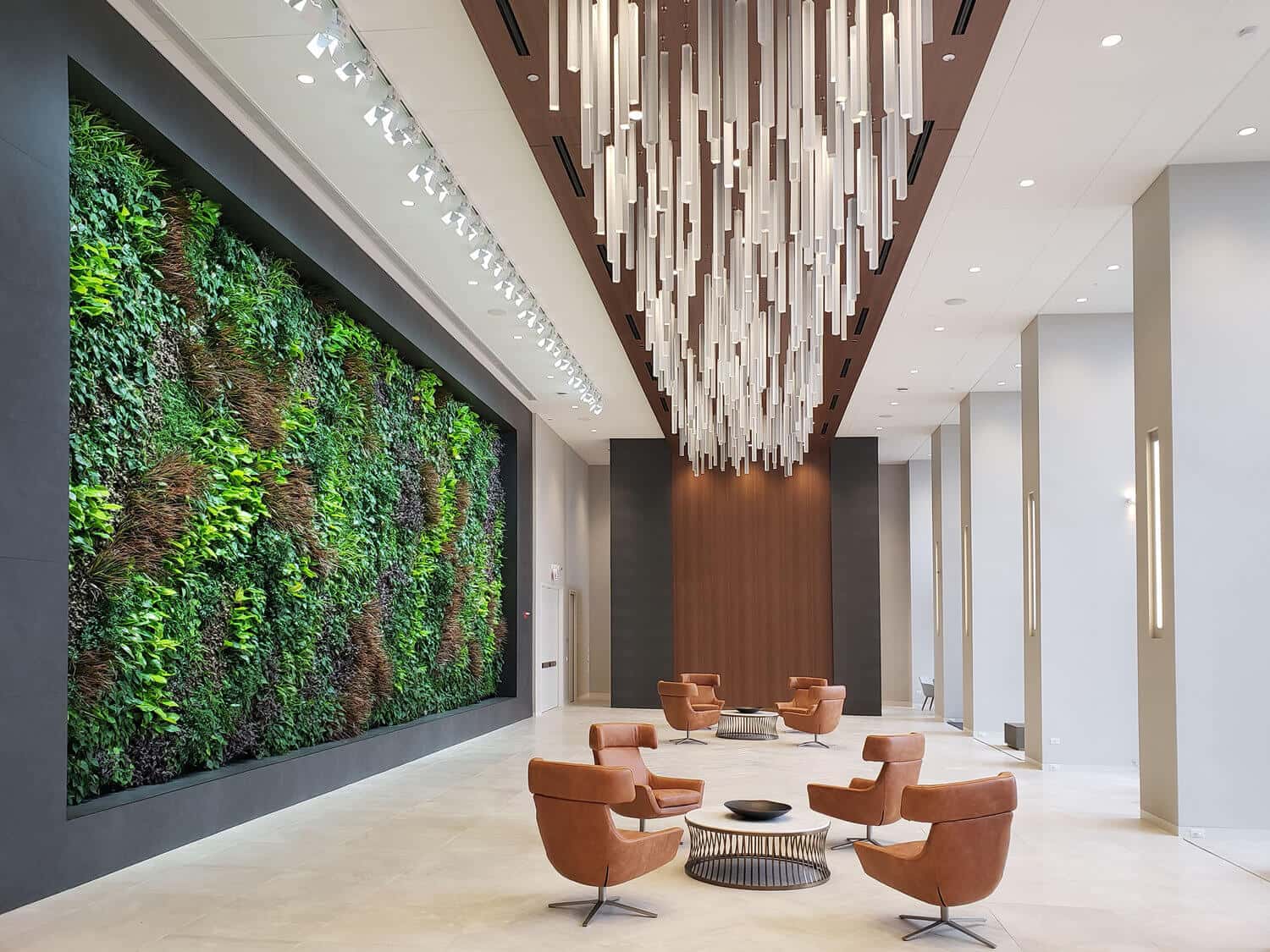Table Of Content

Consider natural finishes that let you see the organic patterns in wood flooring. You can DIY some of these projects or bring in a local handyman to achieve that natural look. Of course, if you’re not an avid gardener, make sure to invest in easy plants. ZZ plants, pothos, and sansevieria are all great options if you’re just stepping into the world of indoor plants.

Mental health benefits
Due to the Urban lifestyle, our contact with Nature has become less frequent (Turner et al., 2004). Nature continues to fascinate us, but our sense of affiliation with wild Nature has slackened (Miller, 2005). Our sporadic encounters with Nature are no longer enough to stimulate our biophilia, which tends to atrophy (Wilson, 1993; Barbiero, 2011). In the near foreseeable future, the phenomenon of disconnection from Nature will tend to accentuate.
Creating Biophilic Buildings
TRADE ENQUIRIES - Creating Virtual Nature Walls with large scale landscaped murals, printed landscaped nature acoustic panels, chemical resistant high grade virtual reality aluminium prints (for NHS, ICU, A&E, Cancer Wards, education, workplaces, homes, hospitality). One of the colors that’s consistently trending now is green—not a bright in-your-face green, but rather more soothing shades such as eucalyptus, fern, and muted earthy greens such as sage and moss. Other trending colors that bring the indoors in include terra cotta, clay, and various shades of muted blues. The process of basing decisions about the built environment on credible research to achieve the best possible outcomes. A Simplified Biophilic Design Framework, Principles, Benefits, and the Ecological and Ethical Imperative of designing with nature to promote human and planetary wellbeing. I've always cared about the planet but never knew how I could use my skills to create an impact.
Opt for natural materials.
In some cases, there may be several layers of information in materials that enhance the connection, such as learned knowledge about the material, familiar textures, or nested fractals that occur within a stone or wood grain pattern. In contrast, conventional thermal design tries to achieve a narrow target area of temperature, humidity and airflow, while minimizing variability – the goal being to maintain conditions within the “ASHRAE comfort envelope”. When the entire space meets this goal, laboratory-based predictive models assert that 80% of the occupants would be satisfied at any given time – traditionally an acceptable outcome industry-wide. An alternative approach is to provide combinations of ambient and surface temperatures, humidity and airflow, similar to those experienced outdoors, while also providing some form of personal control (e.g., manual, digital, or physical relocation) over those conditions.
Architects, interior designers, advisors, landscapers, facility managers, construction, planners, ecologist. The Journal of Biophilic Design is a publisher and broadcaster of research into the health and environmental benefits of Biophilic Nature-inspired Design. Biophilic designs are innovative ways to incorporate nature into buildings and modern architecture. Ahead, discover 7 ways to make biophilic design part of your own home, whether you’re building new or upgrading your home. Moreover, planting trees and vegetation is thought to be a natural way of reducing the speed of climate change. Therefore in the longterm, trees could aid the reduction of temperatures globally, not just in a city.
Boldly patterned natural materials, such as granite, instead of manufactured products, also are being used more frequently. A key factor to protecting cities from the effects of climate change is to make them more resistant to extreme weather conditions like flooding. As mentioned above, transforming our cities into sponge cities will be one of the deciding factors to a city’s survival. It’s undeniable that working or living somewhere with nature is better than the typical working environment. Too many individuals in our society feel anxiety and stress in their everyday lives. Additionally, variability in temperature and lighting for instance is proven to benefit our health and our work performance.
Design can evoke the qualities, relationships, and structures of nature without direct replication. This approach is widely relevant to design, and especially to buildings in urban areas that lack natural amenities. The ideas are scalable and can be applied at the room, building, and landscape levels. Biomorphic Forms & Patterns has evolved from research on view preferences (Joye, 2007), reduced stress due to induced shift in focus, and enhanced concentration.
How Outdoor Amenities Can Integrate Biophilia & Biodiversity - Metropolis Magazine
How Outdoor Amenities Can Integrate Biophilia & Biodiversity.
Posted: Wed, 06 Dec 2023 15:01:48 GMT [source]
Within the last few years we became urban dwellers, with more people living in cities than in the countryside. In coming decades, it is projected that 70 percent of the world’s population will live in cities. With this shift, the need for our designs to (re)connect people to an experience of nature becomes ever more important. Biophilic design is not a luxury, it’s a necessity for our health and well-being. Biophilic designinterventions that integrate with other building performance strategies have thepotential to improve user experience and overall systems efficiency. HerbertDreiseitl’s design for Prisma in Nürnberg, Germany, is a good example;sculptural water walls serve as both a thermal control device and exposedrainwater conduit, while contributing to the visual and acoustic ambiance of theenclosed garden-like atrium.
From an evolutionary point of view, the feeling of affiliation seems to reside in “our capacity to experience empathy with other creatures and respond to their concerns as our own” (Goodenough, 1998, p. 127). Empathy, which can be a mediator of affiliation with Nature (Di Fabio and Kenny, 2018), is “an emotional state triggered by another’s emotional state or situation, in which one feels what the other feels or would normally be expected to feel in his situation” (Hoffman, 2008). Normally, a feeling of empathy develops between two human beings; however, the ability to experience empathy is not limited to humans (Angantyr et al., 2011). Forms of differentiated emotional participation and affective empathy are widespread in mammals (Preston and de Waal, 2002). Domestic Nature offers ample possibilities for empathic contact (Hand et al., 2017a) and can help reduce the stress response, as suggested by the Stress Recovery Theory (SRT; for more details see Ulrich et al., 1991). It is therefore reasonable to assume that more frequent contact with domestic Nature tends to aid a faster recovery from stress (Ulrich, 1984).
On the other hand, Neolithic humans lived in stable villages and smaller areas, where population density was higher and encounters more frequent (Stiner, 2001). Village life requires a higher level of socialization and hitherto unknown physical proximity that turns out to be stressful (Larsen et al., 2019) and to which we still do not seem fully adapted. This could explain, for example, the stress response to crowding and why many people seek outdoor spaces in Nature where human presence is rare. Erich Fromm was the first to introduce the term biophilia, defined as “the passionate love of life and of all that is alive” (Fromm, 1973, p. 406).

Integrate technology seamlessly into your biophilic workplace to enhance functionality without detracting from the natural elements. Use hidden wiring, wireless tech, and smart controls for lighting and temperature to maintain a clean and uncluttered environment that supports productivity and well-being. Paleolithic humans lived in small nomadic communities roaming over large areas; population density was low and encounters outside one’s own clan were rare.
Fascination is the key concept of the Attention Restoration Theory (ART; for more details see Kaplan, 1995). People respond with involuntary attention to natural settings, and this guarantees that directed attention can rest and be restored from mental fatigue in adults (Berto, 2005) and in children (Barbiero et al., 2014). Many of the risky behaviors of both men and small animals can be attributed to human inventions—such as roads separating living things from the things they need to survive. Artists, thinkers, designers, and scientists are converging on the value of art, aesthetics and nature, parallelling earlier Romantics’ response to science and tech gone awry. Freud believed that human existence represented a constant struggle between Thanatos, the death instinct, and Eros, the life instinct.
Utilizing biophilic approaches in interiors, they can use botanical shapes and forms, as well as create distinct visual relationships to nature. In doing so, we understand that biophilia consists of different natural layers that echo interior design. Beyond the obvious—and direct—elements of biophilic design, there are also opportunities to provide indirect experiences of nature. This is where some very exciting strategies come into play, such as natural materials like wood and earth, or even images of nature. Indirect experiences provide excellent solutions to spaces where plants are not desired or views of nature and access to a window aren’t feasible.
Yet small scale, micro-restorative Visual [P1] and Non-Visual Connections with Nature [P2] and Presence of Water [P5] can also be very effective. For instance, the psychological benefits of nature actually have been shown to increase with exposure to higher levels of biodiversity (118. Fuller el al., 2007 ), yet these benefits do not necessarily increase with greater natural vegetative area. From this we can derive that small, micro-restorative experiences that are also biodiverse are likely to be particularly effective at engendering a restorative biophilic experience.
Adding a few features here and there will not classify it as biophilic design. Some of these features are directly connected to nature like plants and others are indirectly connected like including biomorphic shapes. Biophilic design first took off in commercial settings, but now it’s becoming popular in homes as well. It’s really gaining steam in office buildings, where Mumford says managers use it to entice people back from their home offices. As our individual buildings form a larger community, I believe we need to start addressing these issues and thinking about how we can help our clients maximize day-to-day experiences with nature.
The biophilic experiences are more likely to persist long termwhen they are embedded in the programming and infrastructure of a place. Land in urban environments is limited and at a premium, so it may be unrealistic to replicate features more suitable to a rural environment in terms of scale or abundance. As such, biophilic design strategies will differ depending on the local political climate, zoning, geography, land availability and ownership. For instance, San Francisco, with its high-density urban form, implemented a ‘parklet’ system, whereby temporary pop-up parks occupy parking spaces for limited periods of time (116. see City of San Francisco, 2013 ).

No comments:
Post a Comment